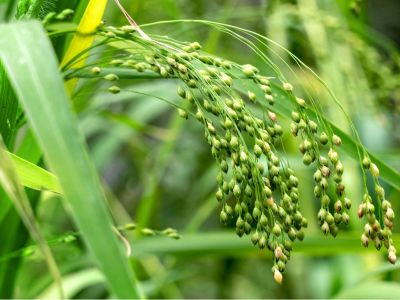Wild Millet Plant Info
Wild proso millet is a reseeding annual grass that can reach heights of 6 feet (2 m.) tall. It has a hollow stem with long, thin leaves and looks very similar to young corn plants. Wild millet grass produces a 16-inch (40.5 cm.) seed head and it readily self-seeds. Here are a few reasons why farmers consider wild millet grass to be a weed:
Causes reduced crop yields which results in the loss of income for farmersResistant to many herbicidesAdaptive seed-producing strategy, which produces seeds even in poor growing conditionsSpreads rapidly due to prolific seed production
Growing Proso Millet
Also known as broomcorn millet seed, wild proso millet is cultivated for both livestock feed and bird seed. The question as to whether millet is a beneficial plant or a nuisance weed can be answered by looking at the two types of millet. Weedy millet produces dark brown or black seeds, while cultivated varieties of wild proso millet have golden or light brown seeds. The latter is grown in many Great Plains states with crops yielding as much as 2,500 pounds (1,134 kg.) per acre. To plant broomcorn millet seed, sow the seed no deeper than ½ inch (12 mm.). Water is needed only if the soil is dry. Millet prefers full sun and soil with a pH of less than 7.8. From the time of sowing, it takes millet crops 60 to 90 days to reach maturity. The plant is self-pollinating with the blossoms lasting about a week and care must be taken at harvest time to prevent seed shattering. Cultivated millet has several agricultural uses. It can be substituted for corn or sorghum in livestock rations. Turkeys show better weight gain on millet than other grains. Wild millet grass can also be grown as a cover crop or green manure. Wild millet seeds are also consumed by many types of wild birds, including bobwhite quail, pheasants, and wild ducks. Planting millet on mudflats and wetlands improves habitat conditions for migrating waterfowl. Songbirds prefer bird seed mixes containing millet over those containing wheat and milo. So, in conclusion, some types of millet can be a nuisance weed, while others have marketable value.
